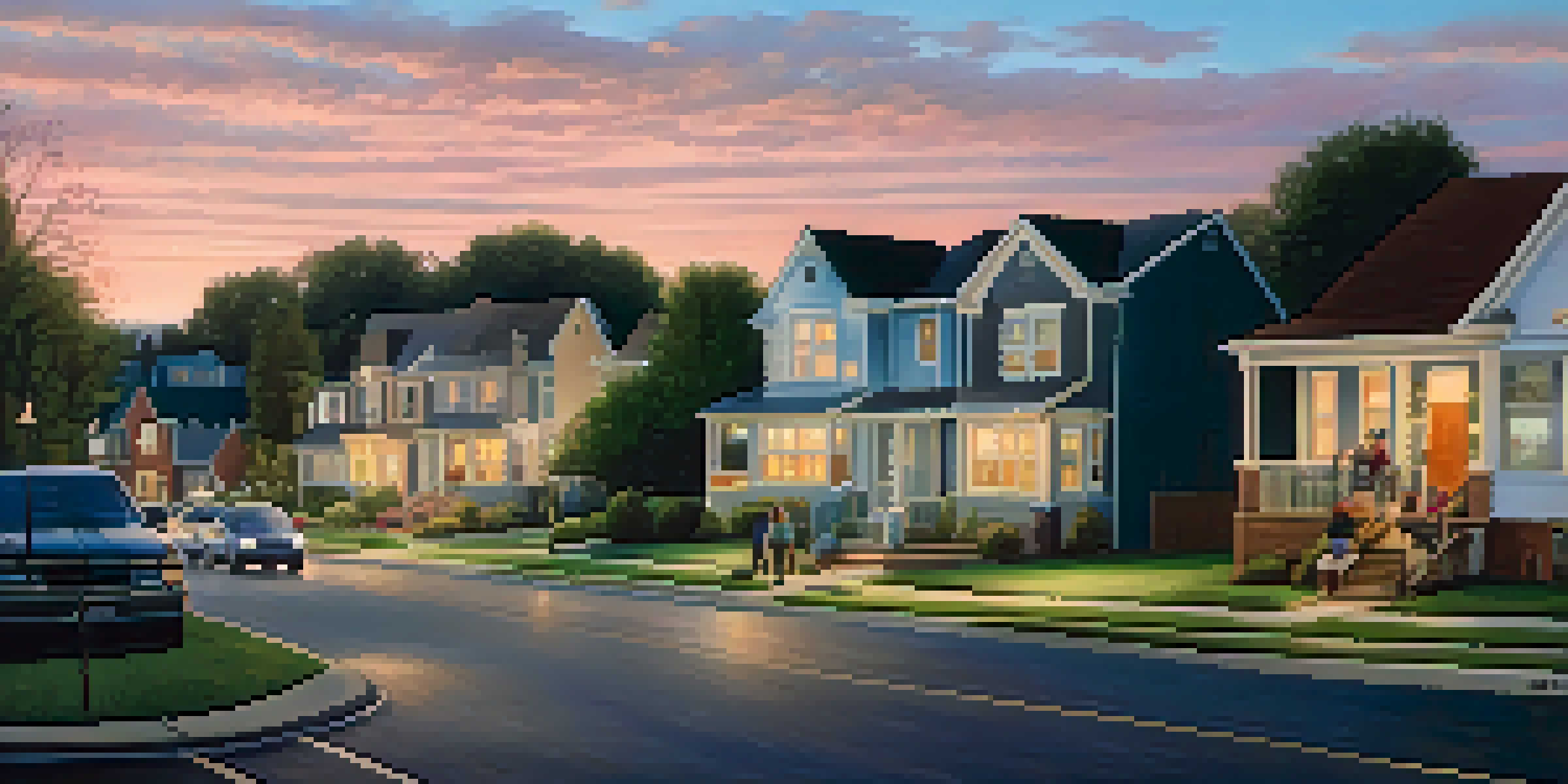Crime Rates and Their Impact on Local Property Values

Understanding Crime Rates and Their Measurement
Crime rates are often expressed as the number of crimes per 1,000 residents. This metric helps to paint a clearer picture of safety in a community. Various factors like population density, socioeconomic status, and community programs can influence these rates.
Crime is not just a statistic; it’s a reality that impacts our communities in tangible ways.
For example, a neighborhood with better lighting and active community engagement typically sees lower crime rates. By understanding how these metrics are calculated, potential homeowners can better assess the safety of a neighborhood.
Moreover, it's essential to look beyond the numbers. Engaging with the community and understanding local perceptions of safety can provide invaluable insights that statistics alone may not reveal.
The Direct Impact of Crime on Property Values
High crime rates often lead to a decline in property values, as safety is a primary concern for potential buyers. When crime increases, homeowners may find it challenging to sell their properties, leading to decreased demand and lower prices.

For instance, a neighborhood that experiences a series of break-ins may see property values drop as families choose to relocate to safer areas. This decline can create a downward spiral, where falling property values further deter new buyers.
Crime Rates Affect Property Values
High crime rates can lead to declining property values as safety concerns drive potential buyers away.
Conversely, improving crime rates can lead to rising property values, making neighborhoods more attractive. Communities that actively work on crime reduction strategies can enhance their appeal and stabilize or even increase property values.
The Psychological Effects of Crime Rates on Buyers
When it comes to buying a home, potential buyers often rely on their gut feelings alongside statistics. High crime rates can evoke fear, making buyers hesitant to invest in a property, regardless of its actual value.
The safety of a community is a reflection of its commitment to one another.
For example, a beautifully renovated home in a high-crime area may still struggle to attract offers. Buyers might envision themselves living in fear rather than focusing on the property’s features and potential.
This psychological barrier highlights the importance of community perception. Even if crime rates decline, lingering fears can take time to dissipate, impacting the local real estate market.
Gentrification and Its Complex Relationship with Crime
Gentrification involves the transformation of a neighborhood, often leading to rising property values. While this process can result in improvements and lower crime rates, it can also displace long-term residents.
Interestingly, as new, often wealthier residents move in, crime rates can initially spike due to social tension and changes in community dynamics. However, over time, gentrification typically leads to enhanced safety and amenities.
Community Engagement Reduces Crime
Proactive community initiatives, such as neighborhood watch programs, can significantly lower crime rates and enhance safety.
This duality raises questions about the long-term effects of gentrification on community identity and property values. Understanding this relationship is crucial for local governments and developers aiming to foster inclusive growth.
Community Initiatives That Lower Crime Rates
Many communities are taking proactive steps to reduce crime and enhance safety. Programs like neighborhood watch, youth outreach, and community policing foster a sense of shared responsibility and engagement.
For instance, when residents collaborate with law enforcement, it can lead to significant decreases in crime rates. These initiatives not only enhance safety but also create a strong sense of community belonging.
As crime rates decline due to these efforts, property values often follow suit. Homeowners can feel more secure, leading to increased investment in their properties and the area overall.
The Role of Local Government in Crime and Property Values
Local governments play a crucial role in managing crime rates through policy and funding. Investments in public safety, infrastructure, and community programs can significantly impact crime rates and, consequently, property values.
For example, cities that prioritize funding for police, mental health services, and community centers often see better outcomes in crime reduction. These improvements not only promote safety but also foster community pride, attracting new residents.
Long-Term Trends Matter for Investors
Focusing on long-term crime trends rather than short-term fluctuations can help homeowners and investors make informed decisions.
Ultimately, effective governance can create a virtuous cycle where decreased crime leads to higher property values, benefiting both current homeowners and local economies.
Long-Term Trends in Crime and Real Estate Markets
Understanding long-term trends in crime rates is essential for homeowners and investors alike. While short-term fluctuations can impact property values, long-term trends often tell a different story.
For example, an area that has seen consistent declines in crime over a decade may become increasingly desirable, regardless of temporary spikes. Investors looking at real estate must consider these historical patterns when evaluating potential purchases.

By focusing on long-term trends, homeowners can make informed decisions about where to invest. This broader perspective helps to mitigate the emotional responses that short-term crime fluctuations might provoke.